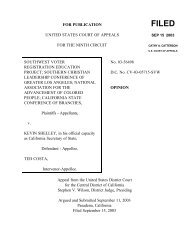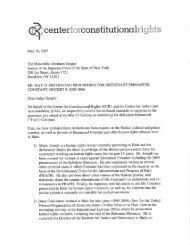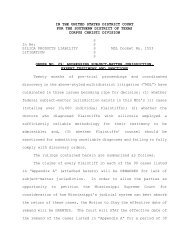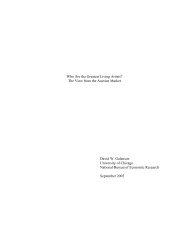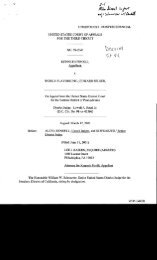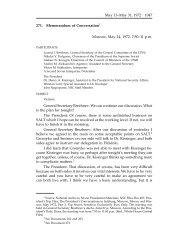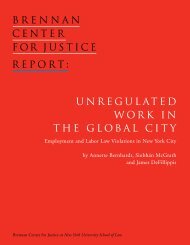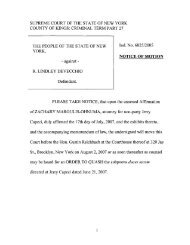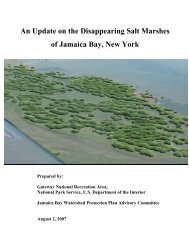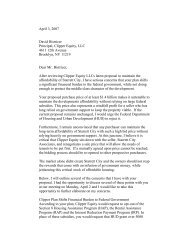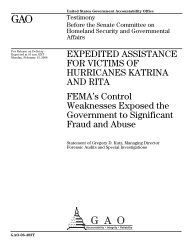UNITED STATES DISTRICT COURT SOUTHERN DISTRICT OF ...
UNITED STATES DISTRICT COURT SOUTHERN DISTRICT OF ...
UNITED STATES DISTRICT COURT SOUTHERN DISTRICT OF ...
Create successful ePaper yourself
Turn your PDF publications into a flip-book with our unique Google optimized e-Paper software.
Case 1:08-cv-07837-PAC Document 51 Filed 10/31/2008 Page 21 of 26<br />
Internal administrative actions do not require notice, public comment, or hearings. The<br />
procedures the City followed are the actions of a regulator, not of a proprietor. The City Charter,<br />
which is the source of the TLC’s power to act, specifies: “The jurisdiction, powers and duties of<br />
the commission shall include the regulation and supervision of [the taxicab industry].” See N.Y.<br />
City Charter § 2303(a) (emphasis added). The TLC is clearly a regulator which routinely<br />
prescribes what the City’s taxicabs may do. That is what it did when it mandated the new fuel<br />
economy standards. As such, it does not qualify for an exception as a market participant.<br />
For essentially the same reasons, Defendants cannot reasonably claim that the 25/30<br />
Rules fall under the “own use” savings clause. The rules regulating private taxicab acquisition<br />
and use are materially and substantially different than the City’s conduct when it buys the tens of<br />
thousands of police cars or other vehicles for the wide variety of fleets that the City owns,<br />
operates, and maintains. The City pays for them with its own funds, takes title to them, and then<br />
uses them exclusively for its own purpose. Taxicabs, conversely, are intended for private<br />
ownership, albeit regulated by the City. While the Court acknowledges that taxicabs may be part<br />
of the public transportation system, that does not mean that taxis are for the City’s own use.<br />
Regulators are not the owners; for example, the New York State Public Service Commission<br />
does not own public utilities; the shareholders do. Another simple example illustrates the point:<br />
if a police car hits a pedestrian walking in the street, that pedestrian may have a lawsuit against<br />
the City. If a taxicab hits the same pedestrian, however, the pedestrian may sue the private taxi<br />
company, not the City. Defendants do not fall into either the “own use” exception to preemption<br />
under § 32919(c) or into a market participant exception.<br />
Defendants’ final argument against preemption of the 25/30 Rules under the EPCA is that<br />
they fall into the “own use” or the market participation exceptions based on language in a<br />
21



